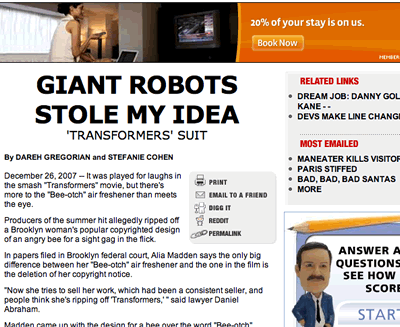Artists’ Rights in Wonderland
A little verse about “work made for hire”:
I passed by his garden, and marked, with one eye,
How the Owl and the Panther were sharing a pie:
The Panther took pie-crust, and gravy, and meat,
While the Owl had the dish as its share of the treat.
When the pie was all finished, the Owl, as a boon,
Was kindly permitted to pocket the spoon;
While the Panther received knife and fork with a growl,
And concluded the banquet by eating the owl.
While it long antedates modern “work made for hire” contracts, this excerpt from Lewis Carroll’s “Alice in Wonderland” expresses their perils.
Too few artists understand the definition of “work made for hire”. The common phrase doesn’t mean that an artist has been hired simply to complete a project for a client. It’s a legal term of art that ensures a one-sided deal with the artist transferring authorship to the client—and in the process, losing all meaningful rights to it.
As an artist, your creation of a work—your authorship—is the source of all the benefits that potentially flow from the copyright law. If you retain authorship, you can endlessly draw off new licensing opportunities. Even if you transfer all rights to a single client, the law says that retaining authorship of your work means you, or your heirs, can entirely recapture those rights after 35 years.
But if you hand over authorship to someone else by signing a work-made-for-hire agreement, those rights are gone forever. Worse, you may even find yourself stealing your own original creation. If one of your later works too closely resembles the one you transferred, it may infringe the rights of that client.
In a work-for-hire agreement, your client is Lewis Carroll’s panther, taking pie-crust, and gravy, and meat, and you, the owl, are left with nothing but the empty dish.
There’s more bad news for that creative bird. Work-for-hire transfers usually have the artist giving the client a warranty that the work won’t violate anyone else’s copyright. So, despite owning the artist’s authorship, the client doesn’t assume any of the associated risks. Those remain on the artist’s shoulders. That’s how the panther-client concludes the banquet by dining on the owl-artist.
You have to eat, too. Never sign a work-for-hire agreement with any cat.
